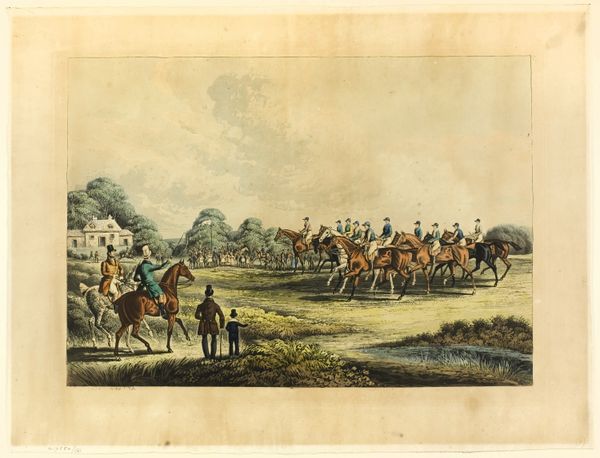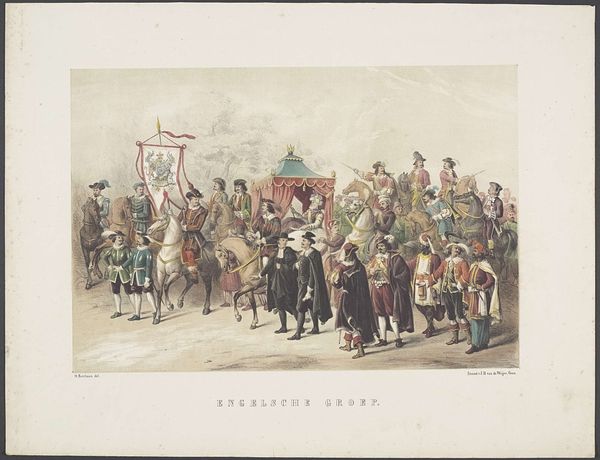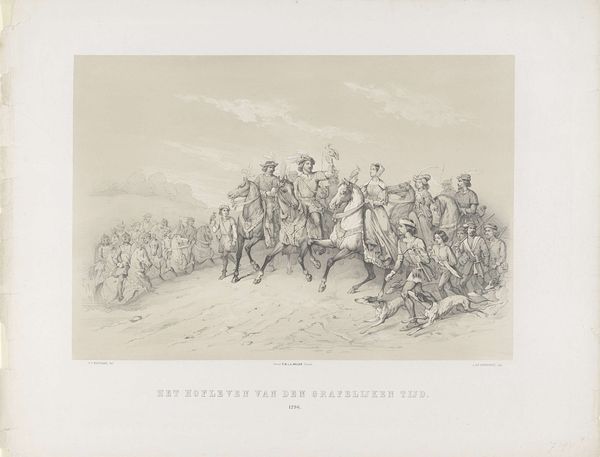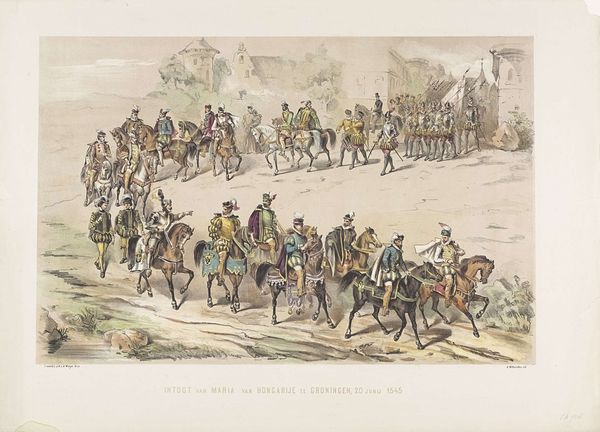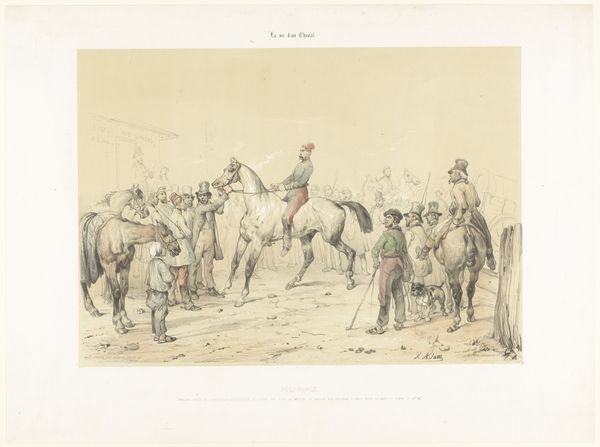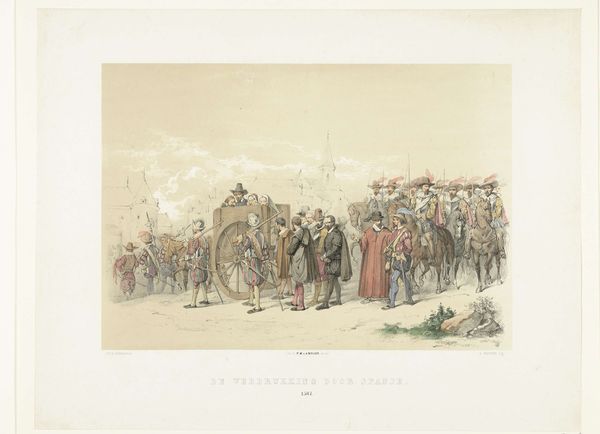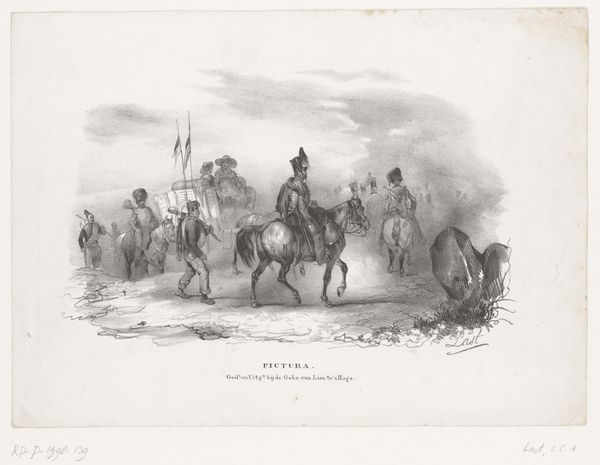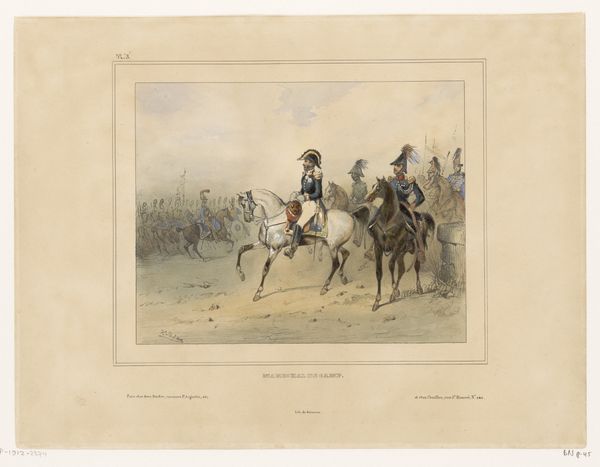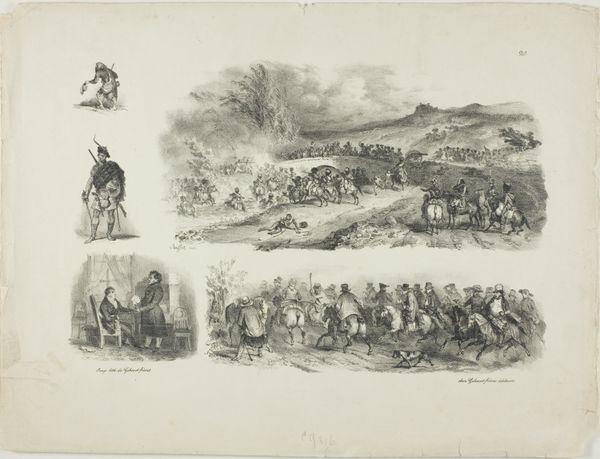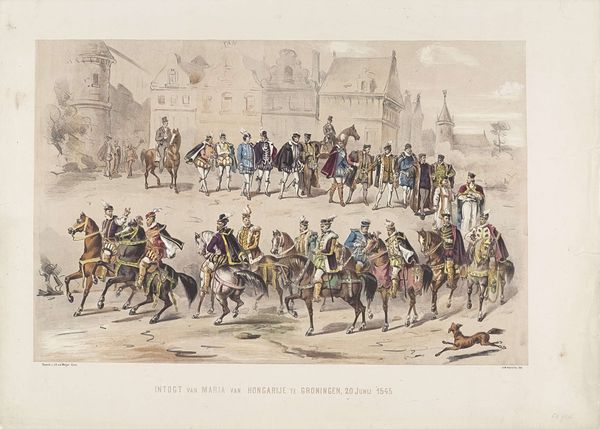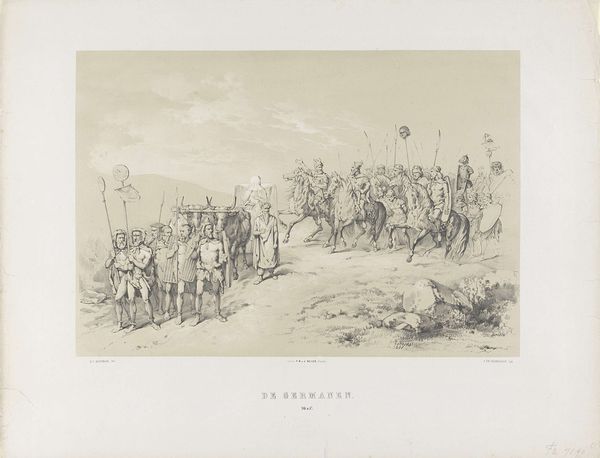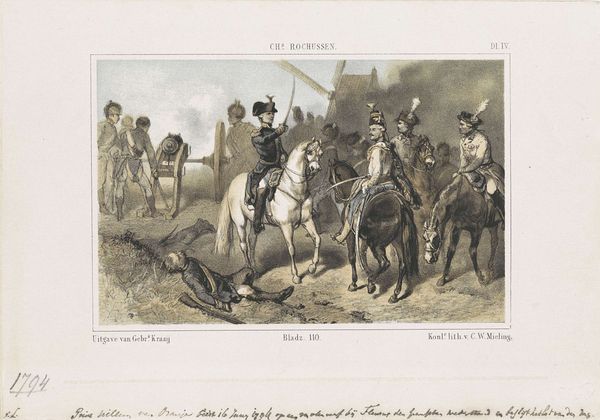
Dimensions: height 500 mm, width 660 mm
Copyright: Rijks Museum: Open Domain
Curator: Here we have a print titled "Utrechtse Maskerade van 1856, plaat 7," created anonymously in 1856. It seems to depict a historical re-enactment, a kind of costumed spectacle. Editor: My initial impression is that this print has an intentionally romanticized feel. The watercolor is delicate, but there's something about the static depiction of a supposed festival that feels almost melancholic. Curator: Interesting you pick up on the melancholic element. Consider the printing process itself. It would have involved meticulous labor, various specialized roles. Was the anonymous artist involved in every stage, or were they working from designs provided by an elite patron eager to present themselves and their contemporaries as aligned with this selective romantic historical narrative? Editor: Exactly. Looking at the people involved, are we seeing a genuine connection to history, or simply a performance for a privileged gaze? It also makes you consider the construction of Dutch national identity, particularly during that era of increased political consolidation. Who is included, and just as crucially, who is left out of this narrative? Curator: And consider the materiality of the print: ink on paper. The accessibility of printmaking allows this re-enactment, a form of exclusive, local cultural consumption, to be disseminated more widely. Did the mass reproduction alter how these events were seen and by whom? What was consumed, the "authentic experience" of a masquerade or a carefully managed representation of Dutch heritage? Editor: I agree. Moreover, it draws attention to issues of power, identity, and historical representation that remain relevant today. Were marginalized groups properly included in the conversation, or were their voices drowned out? Curator: That's astute. This piece makes you reflect not only on 19th-century Utrecht, but also on our modern methods for consuming culture and reinterpreting the past. The methods employed and the cultural narratives constructed offer crucial insights. Editor: I'm left wondering how such celebrations contributed to either bolstering or undermining prevailing social hierarchies. Who was in charge of historical memory? Curator: A poignant consideration; thanks for sharing that perspective. Editor: And thank you, that gives a better framework for approaching the materiality of this "celebration."
Comments
No comments
Be the first to comment and join the conversation on the ultimate creative platform.
